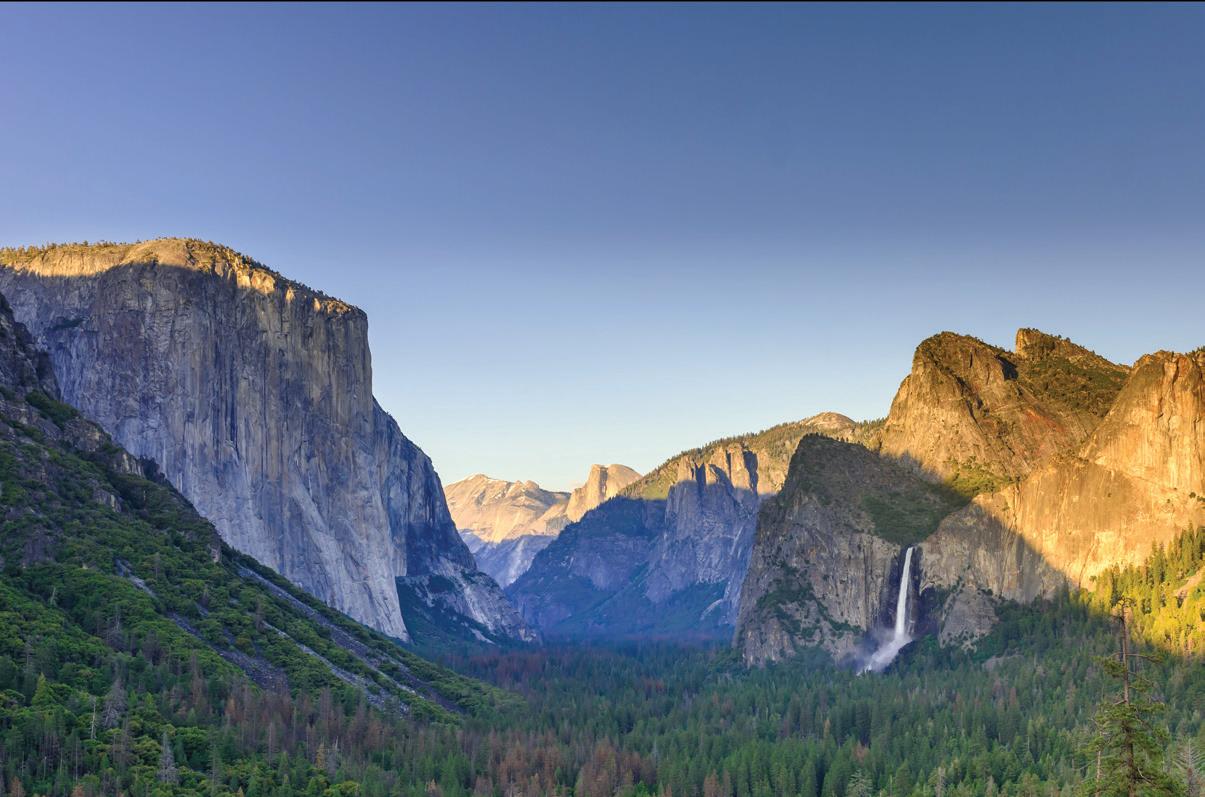
16 minute read
Protecting access to our parks through best practices in pavement preservation
By Brian Hoover, CMS Photos contributed by VSS International
President Woodrow Wilson signed the act creating the National Park Service Aug. 25, 1916. This new federal bureau in the Department of the Interior became responsible for protecting the existing 35 national parks and monuments, and the 27 yet to come. Established for the inspiration, enjoyment and education of current and future generations, the National Park Service (NPS) consists of 419 official units or sites, and 62 designated national parks. These scenic natural wonders draw more than 330 million visitors each year. NPS is second only to the Department of Defense in the amount of infrastructure it manages, with over 42,000 assets across its 400-plus sites that are overdue for maintenance and repairs. The wear and tear from the millions of visitors take its toll on the roads and other aging infrastructure in and around the national parks. NPS’ maintenance backlog is currently at a staggering $12 billion, almost half earmarked for highpriority assets like park road projects. Russell Snyder is the executive director of the California Asphalt Pavement Association (CalAPA ® ), and he has long promoted the benefits of investing in our national parks. “Current projections show that investing in our national parks could create or support more than 16,500 jobs here in California and 110,169 across the country,” says Snyder. “Many national parks have waited too long for these needed and backlogged repairs. By addressing these infrastructure demands, we can better protect these national treasures from further infrastructure challenges.”
California is the home of nine national parks that include some of the world’s favorite vacation destinations like Yosemite, Redwood, Sequoia and Joshua Tree National Parks. According to NPS, California has nearly $1.9 billion in deferred maintenance projects currently on the books. VSS International (VSSI) designs, builds and installs pavement preservation systems on large and small projects for both public and private entities. As part of a Multiple Award Task Order Contract (MATOC), the Federal Highway Administration (FHWA) awarded VSSI with pavement preservation
contracts for the Yosemite National Park and the Golden Gate National Recreation Area.
Established in 1890, Yosemite National Park is arguably one of the most beautiful places to visit in all of America. Located in the western Sierra Nevada mountain range of Central California and encompassing 748,436 acres, Yosemite is considered by many to be the “Crown Jewel” of the US National Park System. The park is recognized internationally for its granite cliffs, waterfalls, clear streams, giant sequoia trees, lakes, mountains, meadows, glaciers and abundant wildlife. With all this going for it, the park continues to suffer from disrepair and is in immediate need of at least $582 million in infrastructure rehabilitation.
Jeff Roberts is the senior vice president for VSSI and he worked closely with all the stakeholders on this pavement preservation project. VSSI was awarded a $6.4 million pavement preservation contract from MATOC and the FHWA to perform asphalt grinding, paving and patching, along with crack seal, microsurfacing and pavement striping. “The base project consisted of large mainline sections of Big Oak Flat Road and Tioga Road, in addition to 44 additional parking areas, and more than 40 pullouts and campground roads. Construction was scheduled to be performed from April to August in 2019,” says Roberts. “There were certain areas and segments that had to wait due to the heavy annual snowfall. Tioga Pass Road

is closed during the winter months as it is almost always buried under several feet of snow. This left a small window during the peak tourist season for our crews to complete the work in these sections.”
Above: As the fresh microsurfacing cures, summer tourists travel through lane closure on Tioga Road - elevation 9,074 feet.
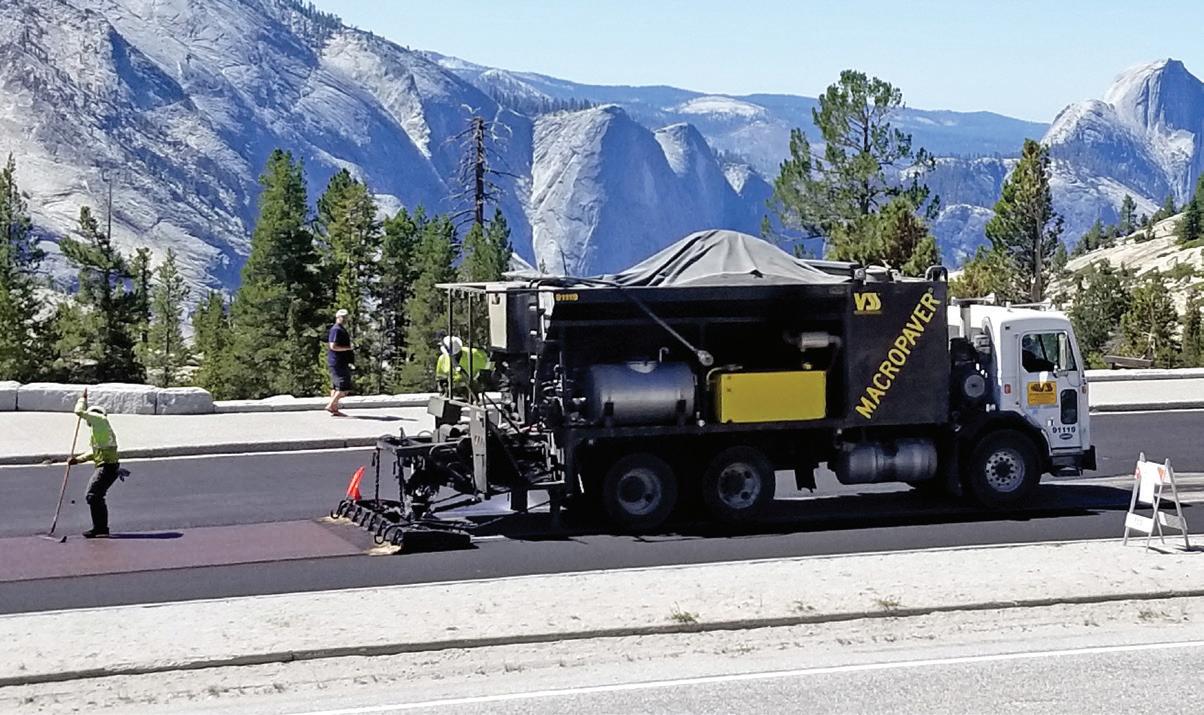
Below: Crews complete Type II microsurfacing at Olmstead Point Parking Lot - elevation 8,141 feet.
Roberts also points out that several other areas would receive more than one construction phase. He says that this was due to traffic restrictions and congestion and the fact that many of the roadways and parking lots needed to be open to traffic within 48-hours or even on the same day. “The first step in pavement preparation is evaluating the surface and identifying areas of failure,” continues Roberts. “These sections were then removed and replaced to create a sound structural surface to place microsurfacing. A crack fill treatment was also utilized to prevent water from penetrating the surface and eroding the base material, which is the foundation of the roadway.” Prior to microsurfacing, it was necessary for the loose dirt and other deleterious material to be cleared from the construction area. Care was also taken to protect structures such as maintenance holes, valve boxes, drop inlets and all existing concrete work, rock walls, stone and wood curbs. There were also many historical features, rumble strips, wheel stops, and vegetation that needed to be shielded and preserved.
Before any microsurfacing can begin, the materials are mixed and submitted to the FHWA. The mix design must conform to ISSA A 143 guidelines, show aggregate gradation values, and measure emulsified asphalt content and polymer-modifier added to the emulsion in addition to water needed mineral filler (cement) content and recommended additive percentages. The key ingredients are also sent to the federal testing facility for quality assurance purposes.
VSSI performed 714,000 square yards of microsurfacing, a polymermodified cold-mix paving system used to remedy a broad range of issues on streets, highways and airfields. This includes the application of a graded aggregate and formulated emulsion that will bind to the existing asphalt concrete surface, creating a wearing course to protect the roadway from oxidation and traffic. “The two routes that were specific to our microsurfacing operations, were Big Oak Flat Road and Tioga Road,” says Roberts. “These two routes, also referred to as Highway 120, were designated by the Federal Highway Administration for this 2019 Yosemite preservation project.”
According to Roberts, the turnouts, parking areas and campgrounds were preserved with a Macropaver 12E truck mount surfacing machine. The mainline highway sections were placed using a continuous paver, which was specified to reduce joints by continuing to apply microsurfacing as the support unit disconnects and waits for the next to arrive. The microsurfacing of Big Oak Flat Road and Tioga Road were completed using a Type 3 microsurfacing. This particular material was selected for its ability to stand up to the heavy traffic volumes the park continually experiences. The other roadways and parking areas utilized a Type II microsurfacing, which was selected for its finer gradation and aesthetics. “Both materials were supplied by the George Reed Table Mountain [ Continued on page 12 ]
Keeping granite curbs clean required attention to detail while performing hand work at Tuolumne Grove Parking Lot - elevation 6,195 feet.


Mainline application of microsurfacing at Tioga Road near Tamarack Flat Campground - elevation 7,042 feet.
A NEW KIND OF POWER TOOL
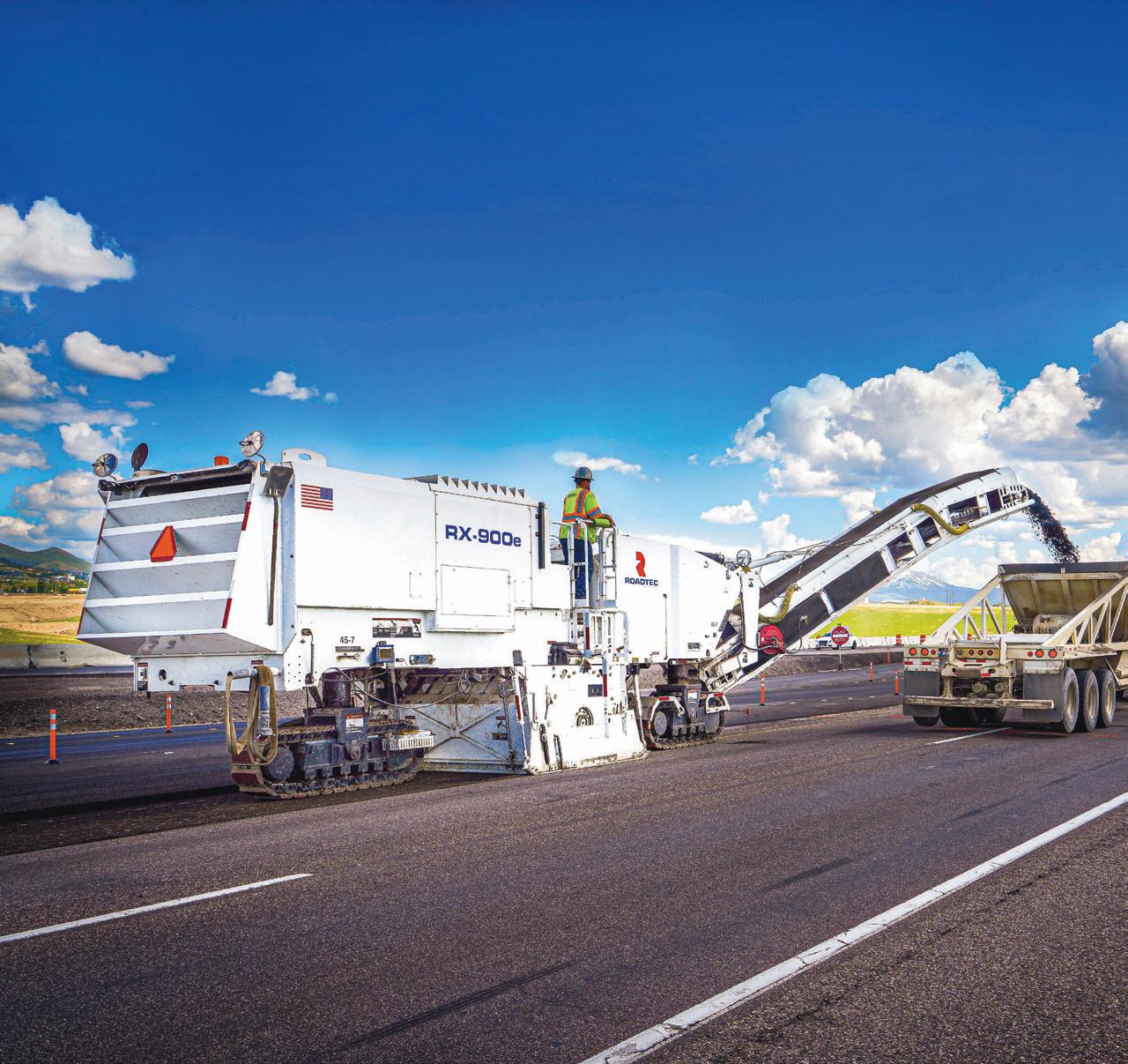
MADE FOR HIGHWAY MILLING
Roadtec mills combine power with durable construction and flexibility. The 1050 horsepower RX-900 offers superior material evacuation, ACE™ Automated Control of Elevation, and Auto Cut™ entry making it your best choice for milling.
See the full range of products at roadtec.com
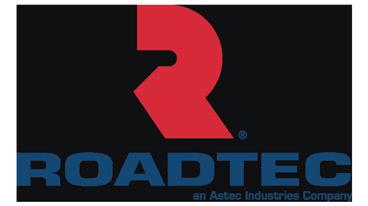
Dedicated to Your Success SM
Yosemite
[ Continued from page 10 ] facility. The FHWA specified this aggregate for its sound and durable properties,” says Roberts. “The microsurfacing emulsion was supplied by VSS Emultech, which was the only facility within 150 miles that could meet the specific demands of this project.”
Roberts says that the terrain also played a factor in the construction process. “Construction would often slow to a crawl as it passed by the construction equipment on the narrow roads,” continues Roberts. "Traffic was also restricted to one lane, which slowed down the visitor's travel plans. But traffic remained open, and the crews did a great job mitigating all of the challenges.”
The FHWA Standard specifications also had weather and temperature restrictions for each phase of the work. Construction was further complicated at times as snowfall and runoff caused delays in the project from start to finish. “You can’t pave when the asphalt is wet and especially when runoff is flowing across the roadway,” continues Roberts. “This caused delays in other phases, along with the ever-changing daily ambient temperatures.”
VSSI completed its work on the Yosemite National Park Pavement Preservation Project Sept. 20, 2019. "Our work at Yosemite was a great success, and I would like to thank everyone on and off the project,” concludes Roberts. “From every hard-working man and woman at VSSI to the support of the National Park Service, and FHWA who works so very hard to maintain reliable roads that bring so many wonderful visitors to Yosemite National Park.” [ Continued on page 14 ]
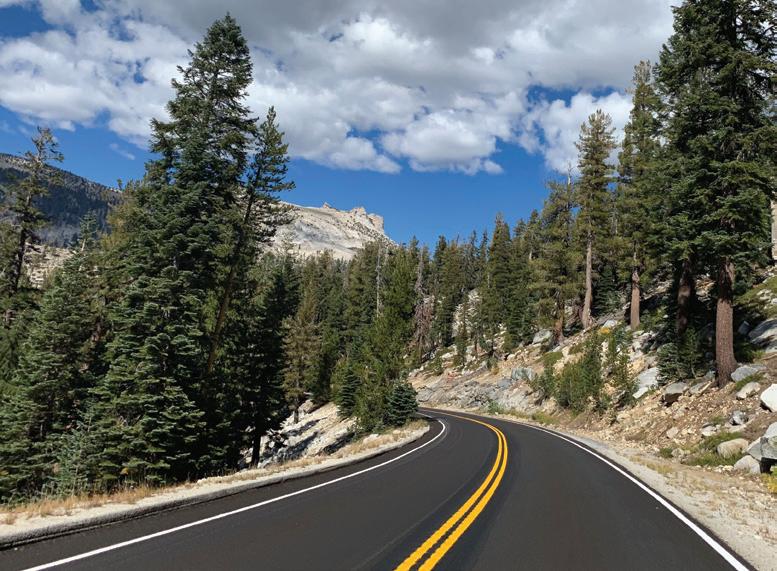
Above: Type III microsurfacing finished product on Tioga Road - elevation 8,530 feet.
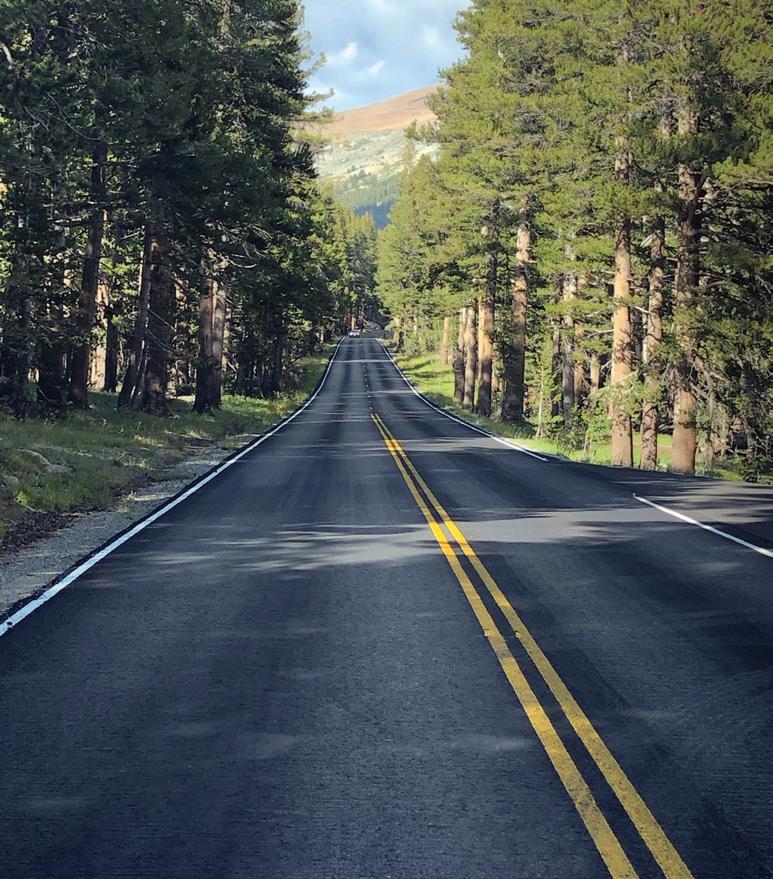
Below: Type III microsurfacing on Tioga Road Near East Gate - elevation 9,632 feet.
Ideal for projects that require meeting a thickness specification, the new Trimble® Roadworks 2D Paving Control Platform for asphalt pavers is a non-contact paving system that gives you greater flexibility and more control over the mat.
Key Benefits:
• Built On Android OS • State-Of-The-Art Software • Rugged and Durable Components • Improved Sensor Mobility • Self-Discovery Features • Reduced Labor Costs
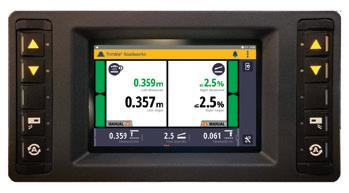

Contact your local SITECH dealer today for the very latest in construction technology!
Northern California SITECH NorCal
833 Montague Ave San Leandro, CA 94577
888-4-A-LASER Central California
SITECH West
4221 Northgate Blvd. #7 Sacramento, CA 95834
916-921-0550 Southern California
SITECH Pacific

VSS International’s team of professionals take a quick break at East Conzelman Road to acknowledge the beautiful park setting in which they are working.
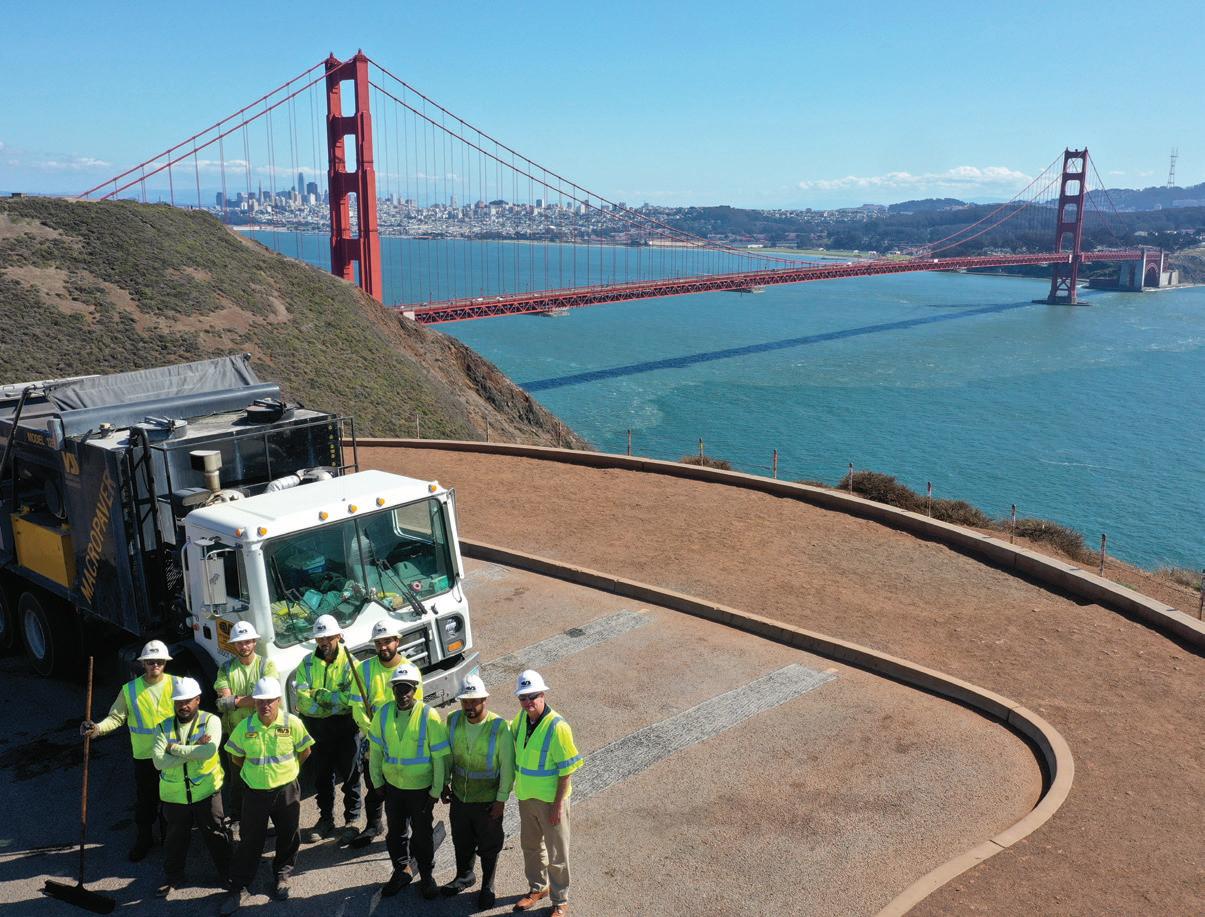
[ Continued from page 12 ]
The Golden Gate National Recreation Area (GGNRA) was established in 1972 to protect 82,027 acres of ecologically and historically significant landscapes surrounding the San Francisco Bay Area. GGNRA is managed by the National Park Service and is one of the world's largest urban parks. GGNRA is also the most visited in the United States, playing host to more than 15 million annually. The park is not located in one continuous location but is instead spread out from southern San Mateo County to northern Marin County and includes several areas of San Francisco. GGNRA is also home to over 3,000 plant and animal species and encompasses 59 miles of bay and ocean shoreline.
In 2019, VSS International, Inc. (VSSI) was awarded a pavement preservation contract for a section of the park known as the Marin Headlands under the Federal Highway administrations Multiple Award Task Order Contracts (MATOC). The Golden Gate Pavement preservation contract tasked VSSI with providing asphalt repairs, crack filling, striping removal, type II microsurfacing, and replacement of permanent delineation on 15 miles of roadways and 50 parking lots. Once again, VSSI vice president, Jeff Roberts, was involved with the administration and day to day operations on this project. "The intent and purpose of pavement preservation products are to provide a wearing surface to extend the pavement's life. Pavement patching and crack fill were performed on failed or failing areas," says Roberts. "Pavement patchwork was completed in areas that were distressed and showing signs of failure to a depth of 4 to 10 inches." The full depth of the
asphalt was removed, the base was compacted, a geogrid fabric was placed, and then the hot mix asphalt was replaced on top of the material."
Following patch paving, crack fill was used on the areas where the base structure of the road was still intact, but according to Roberts, the AC was showing signs of distress. "Cracks were filled with a hot rubberized sealant to prevent moisture from entering through the road and eroding the stable road base. Patch paving, crack fill and removal of thermoplastic pavement markings is an absolute necessity for the success of any pavement maintenance project," continues Roberts. "Following the preparation work, microsurfacing was placed, with a specifically graded aggregate designed to meet the type II gradation specifications." Roberts says that one of the advantages of microsurfacing is the quick set that allows for faster openings to traffic. The other benefit is that it can be stacked, allowing for multiple course applications. "We were able to create a formula and mix design that allowed for workability and still meet the standards within the specifications," continues Roberts.
With an average of 41,000 people visiting GGNRA each day, traffic control was extraordinarily challenging and required more attention than usual. VSSI scheduled and implemented the project with minimal disruption to the park operations or visitors by applying a rigorous traffic control program and maintaining a dedicated traffic control supervisor with an average of eight flaggers each day. There were also 50 parking lots to manage, requiring VSSI to continually communicate with the park service, FHWA, and the public through notification of all affected parties in advance of operations. Ecological guidelines and procedures were also strictly adhered to in order to mitigate any negative impact from the construction operations. This included sanitizing the equipment before on-site mobilization to assure that no invasive species were brought into the recreation area. Additionally, a strict water pollution control plan was followed to prevent all runoff from stored materials.
Environmental protection of the park ecology is only one aspect of the quality control measures that are required by the FHWA on National Parks projects. VSSI also hired an engineering firm to perform and implement quality control. During construction, the quality control manager has the responsibility of sampiling and testing the aggregate gradation for the microsurfacing. Test results need to be turned around and reports submitted within 24 hours. Additionally, compaction testing for the asphalt repairs and verifying the patch's depth before replacing with asphalt concrete was performed.
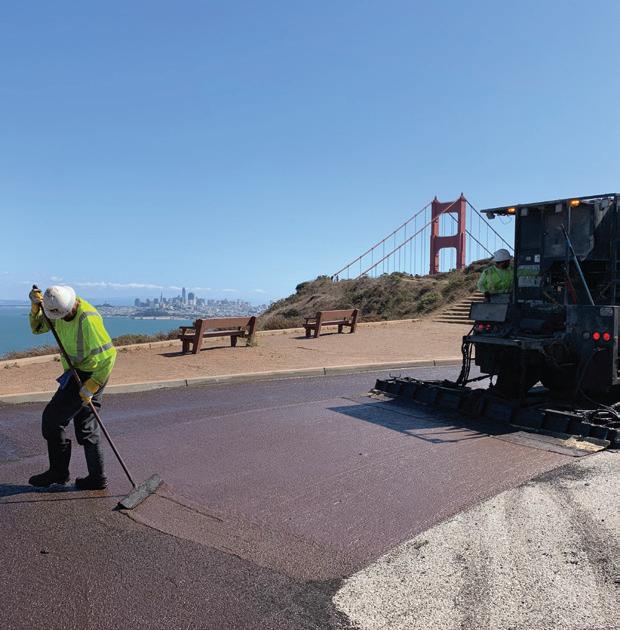
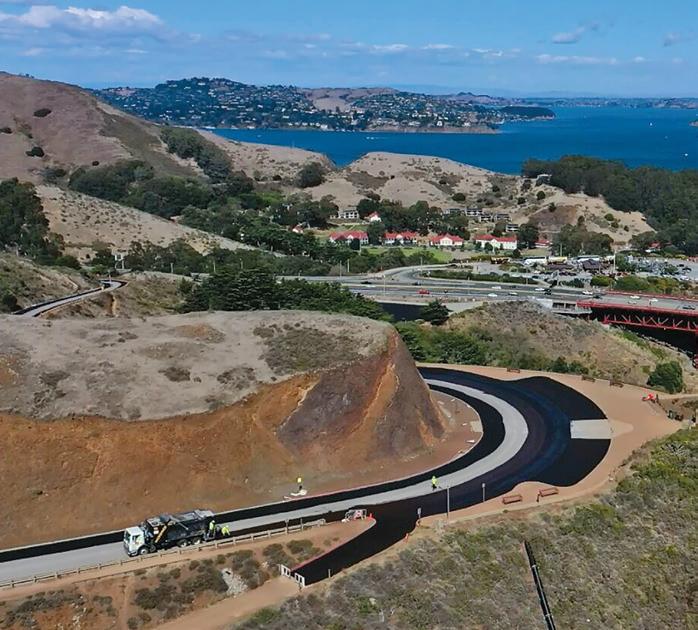
Below Left & Right: Type II microsurfacing being applied at the East Conzelman Road mainline and all parking areas.
Above & Left: Type II microsurfacing finished product at Hawk Hill Parking Lot and West Conzelman Road approaching Muir Beach Parking Lots and the Point Bonita Lighthouse.
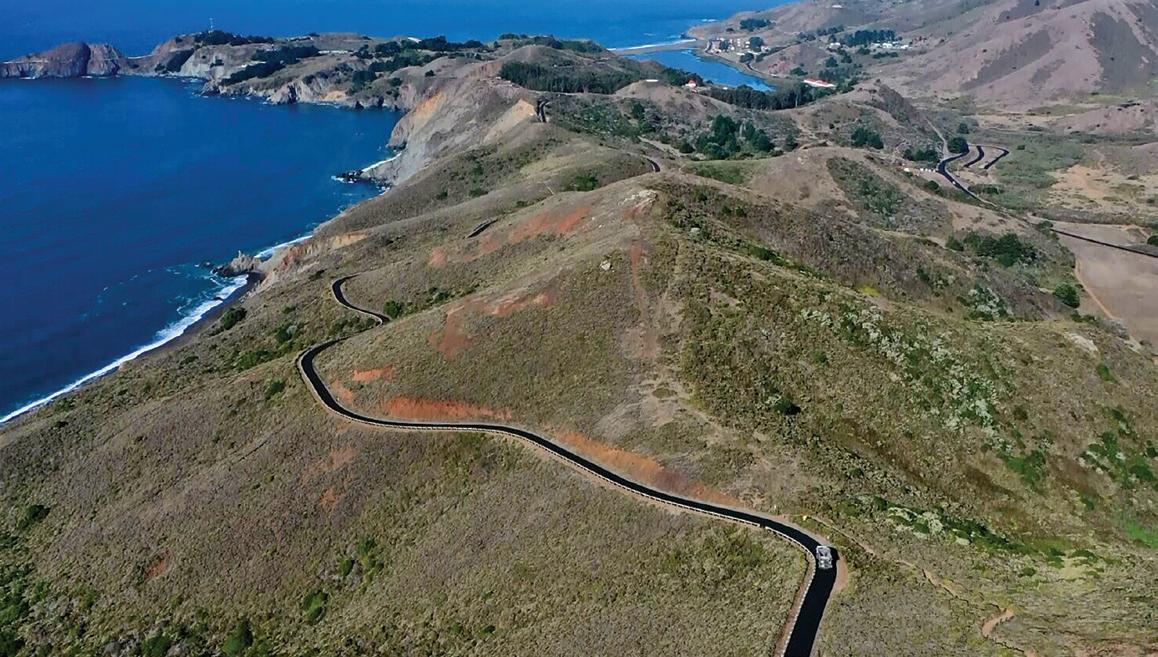
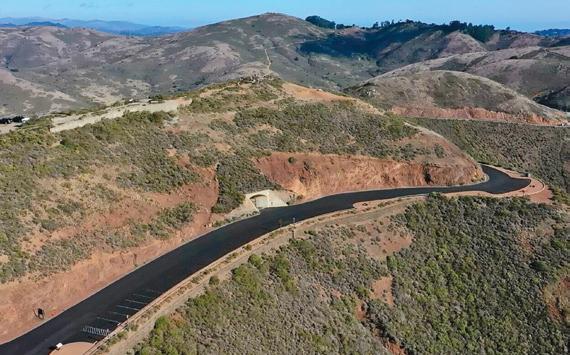
Roberts says that it was crucial to complete the Conzelman Road and McCullough Road sections within 48 hours to ensure minimal inconvenience to all park visitors. "Conzelman West was also a complete closure and included a winding 3-mile, one-lane road that runs along the Pacific Ocean shoreline at an 18 percent grade," says Roberts. "Our confident, cautious, and experienced road crew utilized our VSS Macropavers to complete this challenging and difficult section." Other challenges included weather affected by the moist, warm Pacific Ocean breezes that brought condensation, fog and even rain. "Our crews were always looking to be flexible with their schedule, performing much of the microsurfacing in the afternoon after the fog dissipated," continues Roberts. "There were numerous challenges, but our team members showed their tremendous ability to, once again, deliver the job on time."
According to Roberts, VSSI completed 15 miles of roadway, along with several parking lots, utilizing 2,200 tons of aggregate and 350 tons of microsurfacing emulsion. Black aggregate was supplied by George Reed Table Mountain, allowing for an aesthetically pleasing dark surface designed to last for years. "Parking lot resurfacing in areas like Muir Beach were particularly remarkable when one considers the amount of tedious handwork involved and the fact that we were mandated to have the parking lot open to the public within the same day," continues Roberts. We also created a temporary bike lane on Conzelman East using delineators while waiting for the new drawings. After receiving the reconfigurations plans, we proceeded to complete the permanent bike lane striping. We also continued to sweep throughout Fleet Week to ensure the safety of the traveling public. We then completed the remaining miscellaneous items on the contract, and the National Park Service accepted the job. Another great project made possible through the dedication and cooperation between VSSI, the FHWA and NPS." CA
Brian Hoover is co-owner of Construction Marketing Services, LLC, and editor of CalContractor Magazine.
Editor's Note: The following VSS International employees contributed to this article: Matt Ferguson, construction manager; Scott Youngren, project manager; Mike Harrison, project manager, Sayed Hekmatullah, project manager and Jeff Roberts, senior vice president.
HERRMANN EQUIPMENT, INC., AND HAT CREEK CONSTRUCTION & MATERIALS, INC.

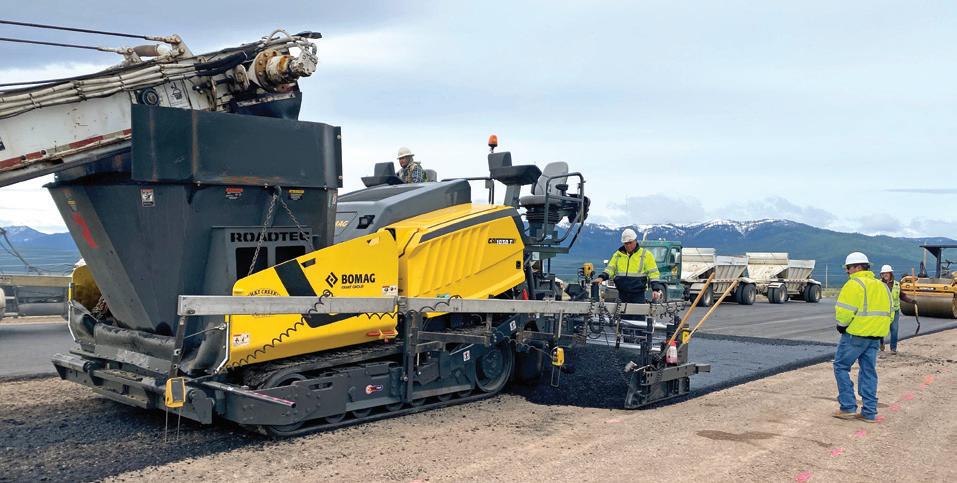
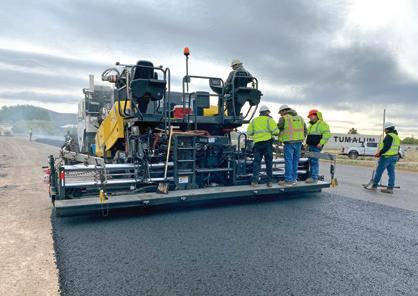
Right & Below: Hat Creek Construction & Materials with their new Bomag 1030 T paving machine on CA Highway 36 in Susanville.
Established in 1972, Hat Creek Construction & Materials, Inc. (Hat Creek) has worked hard to become one of the leading heavy civil contractors in the North State. The scope of their work has them working alongside the California Department of Transportation, state and county municipalities, as well as public and private organizations. Hat Creek also performs federal highway work across the western United States. They primarily work in Northern California and, more specifically, Shasta, Siskiyou, Modoc, Lassen, and Plumas Counties.
Hat Creek Construction & Materials, Inc. recently took delivery of a brand new Bomag 1030 T paving machine from Herrmann Equipment, Inc. They were in the market for their first tracked paver to assist in their numerous mountainous paving projects. Weston Hutchings, Vice President, Hat Creek Construction & Materials, Inc. has this to say about the recent purchase of their new Bomag 1030 T paving machine from Herrmann Equipment, Inc. “Our paving team has been requesting a track paver due to its ability to climb grades and handle curves on the two-lane highway projects. The Bomag 1030 T meets and exceeds Caltrans’ new ride specs, which makes for smoother transitions. This is especially important on the terrain connecting driveways on our rural mountain roads,” says Hutchings. “The visibility and state-of-the-art electronics on our new Bomag make this machine our operator’s favorite.” Hutchings adds, “When it came down to making a buying decision, Matthew Herrmann’s expertise and amazing individual support tipped the scale. We value our relationship with Matthew Herrmann and the Herrmann Equipment team. Recently, we had some questions and needed guidance on our new machine. I called Matthew the night before a big project, and he dropped everything and traveled to our jobsite to help us out,” continues Hutchings. “We appreciate the fact that Herrmann Equipment is local and can service our needs fast and efficiently. Their customer service is simply impeccable.”
SALES • SERVICE • PARTS • RENTAL

NORTHERN CALIFORNIA (916) 783-9333
9220 VIKING PLACE, ROSEVILLE, CA 95747
SOUTHERN CALIFORNIA (909) 877-5597
2711 LILAC AVE., BLOOMINGTON, CA 92316




